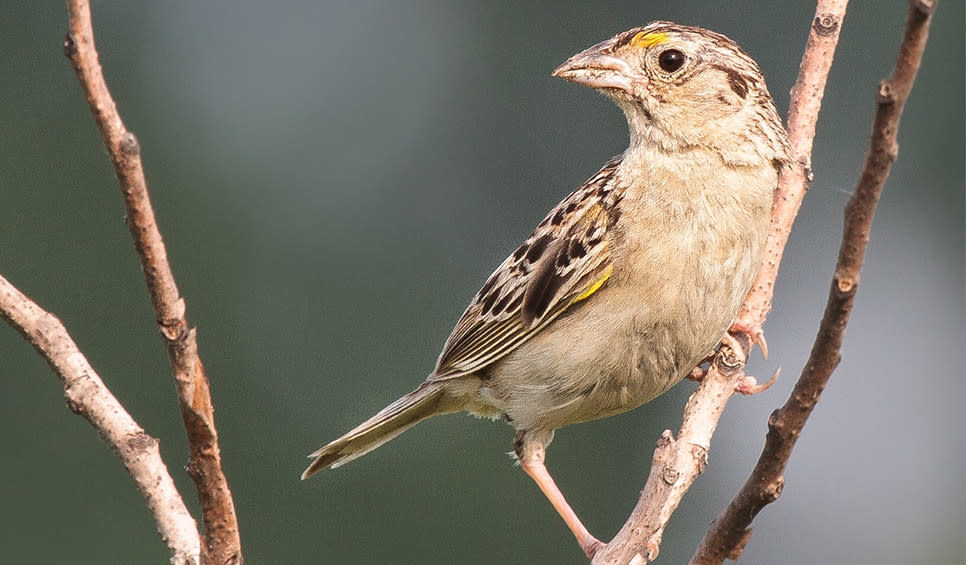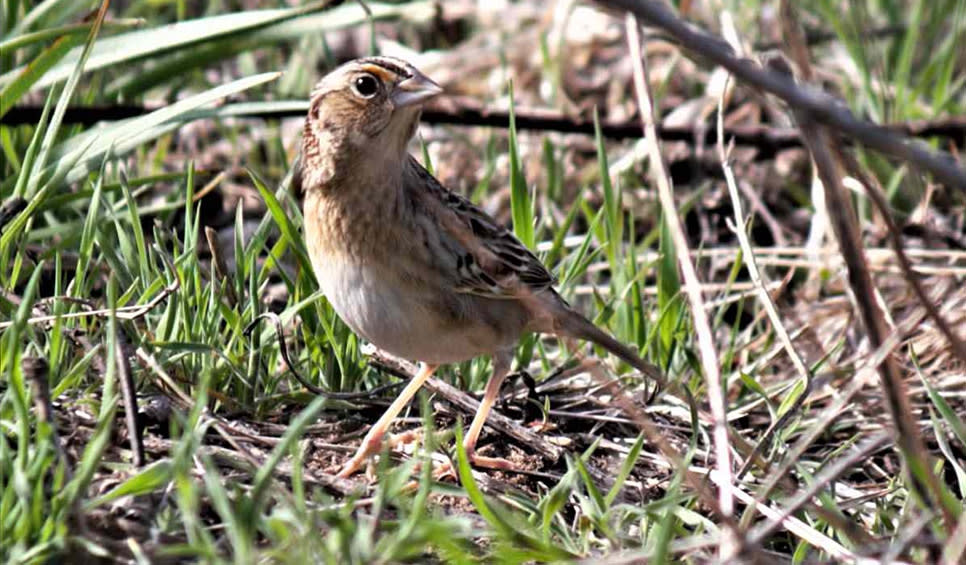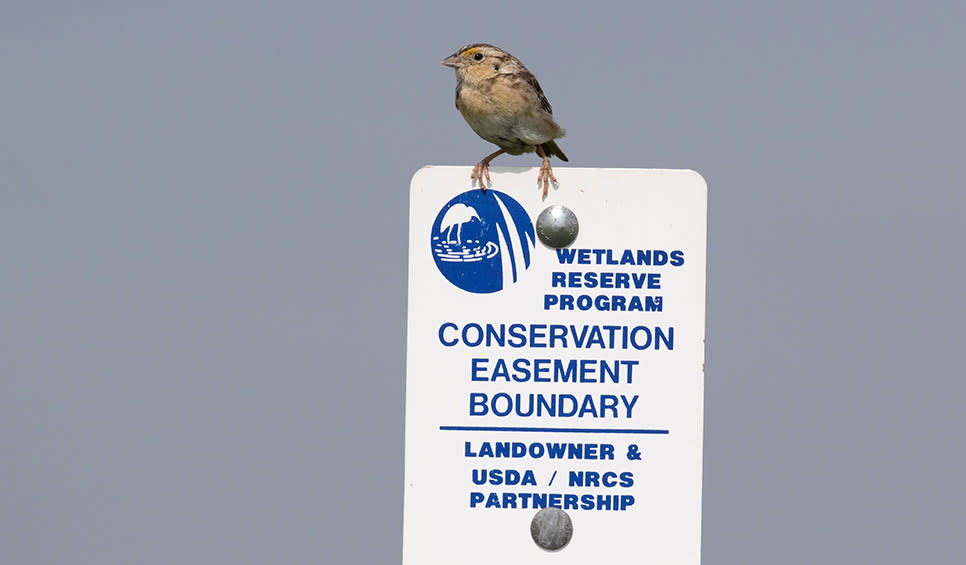Header photo by Kathy Malone
Nature isn’t always what it seems – a chatty little grasshopper sparrow taught me that.
For the first ten or so years that I worked at the Kankakee Sands Nursery, I was always looking down, either at the native plants that I was planting into the soil, or at the seeds that I was harvesting for our prairie plantings. Yet all around me was a magical, buzzing symphony of insect life – bees, dragonflies, grasshoppers, mosquitoes, crickets, katydids – or so I thought.
While working with my eyes cast downward, I’d stumble upon small delicate grass nests, often interlaced with the occasional strand of hair or tuft of fur, and tucked neatly into a light depression in the ground. Often the nests held small white eggs speckled with red flecks.
You can see a lot of things when you are looking down at the ground, but you can also see a lot of things when you look up! While harvesting sand-coreopsis one afternoon, I looked up to see right there in front of me, perched on a stiff stalk of round-headed bushclover, a male grasshopper sparrow (Ammodramus savannarum) singing. And what came out of his mouth was astonishing – it sounded to my ear exactly like a grasshopper! To the mate he was trying to attract to his territory, he surely sounded like a male grasshopper sparrow, but he certainly took me by surprise and made me rethink the audible world around me.

Photo by Kathy Malone
The grasshopper sparrow’s song is a high-pitched insect-like tzk tzk bzzzzzzz, so unlike most other bird songs that we are familiar with. Male grasshopper sparrows have a second song that they sing when flying - a delightful rolling jumble of squeaking and buzzing that rises and falls as the sparrow lifts off from one perch and lands on another.
When not singing, grasshopper sparrows are very hard to find. They are small – five inches tall, quiet, and secretive, staying low to the ground as they search for seeds and insects, especially grasshoppers – one of their favorite foods. You might have guessed that!
Sparrow species are notoriously challenging to tell apart from one another, and are therefore often referred to as LBJs = little brown jobs. But, if you have a pair of binoculars and are willing to give it a try, you will see that grasshopper sparrows have a larger, flatter head, and shorter tail than most other LBJs. They are brown and tan, like most sparrows, but their belly is white, and their breast is buff colored without the brown streaks that many other sparrow species have. Other notable features include a white ring around each dark eye, and two spots of yellow – one at the corner of the eye, and one on the bend of their wing.

Photo by Barb Lucas
Grasshopper sparrows winter in the southeastern United States, Cuba, Jamaica, Haiti, Mexico, Guatemala, Belize, El Salvador and Honduras. They return in the spring to grasslands and prairies in most of the eastern United States, west to Washington, Idaho, Wyoming, and Texas. (According to ebird.org, they are on their way back as I write!) You can imagine that habitat destruction in any of their breeding or wintering grounds can have devastating impacts to the grasshopper sparrow populations.
Their numbers indeed have been declining dramatically due to habitat loss, fragmentation and/or conversion. The North American Breeding Bird Survey found that between the years of 1966 and 2015, the population of grasshopper sparrows declined 72%!

Photo by Kathy Malone
But the wonderful news is that grasshopper sparrows respond very positively to restored prairies, even those that are managed with prescribed burning, grazing and mowing – just like our prairies at Kankakee Sands. So the possibility of bringing their numbers back up through habitat management across North America is within reach.
This year, with the 17-year cicada due to emerge in May, all ears will be tuned to their buzzing. But be sure to look and listen with an expert ear. The grasshopper sparrows will also be singing in May. Can you tell the difference?
The Nature Conservancy’s Kankakee Sands is an 8,300-acre prairie and savanna habitat in Northwest Indiana, open every day of the year for public enjoyment. For more information about Kankakee Sands, visit www.nature.org/KankakeeSands or call the office at 219-285-2184.



